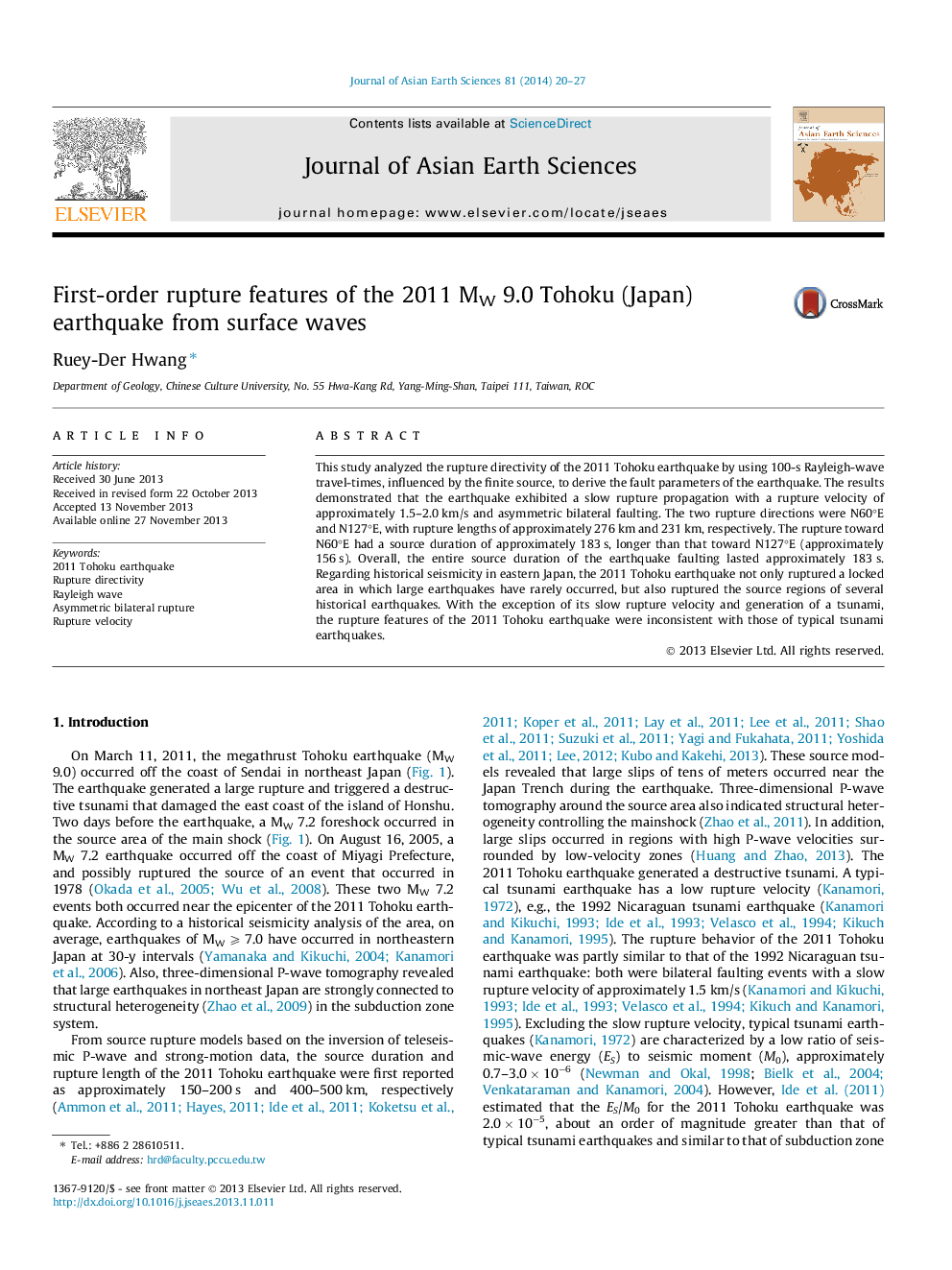| Article ID | Journal | Published Year | Pages | File Type |
|---|---|---|---|---|
| 4730814 | Journal of Asian Earth Sciences | 2014 | 8 Pages |
•The fault parameters of the 2011 Tohoku earthquake were derived by Rayleigh waves.•The earthquake was a slow event (∼1.5 km/s) with an asymmetric bilateral faulting.•The rupture toward the NE had longer source duration than that toward the SE.•The ruptures of the earthquake were inconsistent with typical tsunami earthquakes.
This study analyzed the rupture directivity of the 2011 Tohoku earthquake by using 100-s Rayleigh-wave travel-times, influenced by the finite source, to derive the fault parameters of the earthquake. The results demonstrated that the earthquake exhibited a slow rupture propagation with a rupture velocity of approximately 1.5–2.0 km/s and asymmetric bilateral faulting. The two rupture directions were N60°E and N127°E, with rupture lengths of approximately 276 km and 231 km, respectively. The rupture toward N60°E had a source duration of approximately 183 s, longer than that toward N127°E (approximately 156 s). Overall, the entire source duration of the earthquake faulting lasted approximately 183 s. Regarding historical seismicity in eastern Japan, the 2011 Tohoku earthquake not only ruptured a locked area in which large earthquakes have rarely occurred, but also ruptured the source regions of several historical earthquakes. With the exception of its slow rupture velocity and generation of a tsunami, the rupture features of the 2011 Tohoku earthquake were inconsistent with those of typical tsunami earthquakes.
